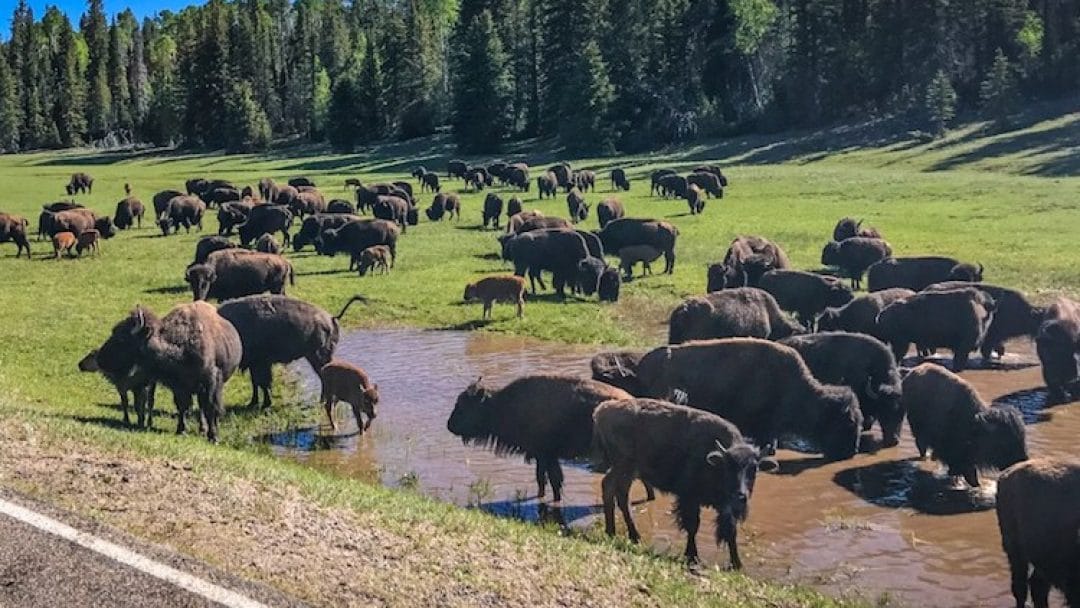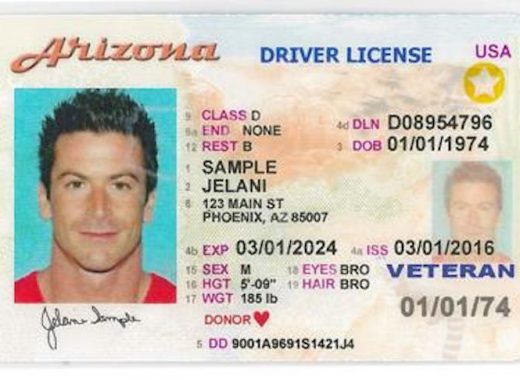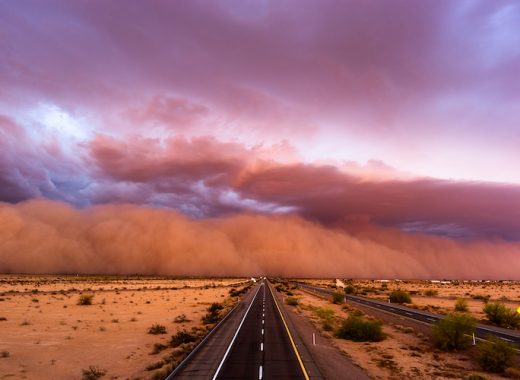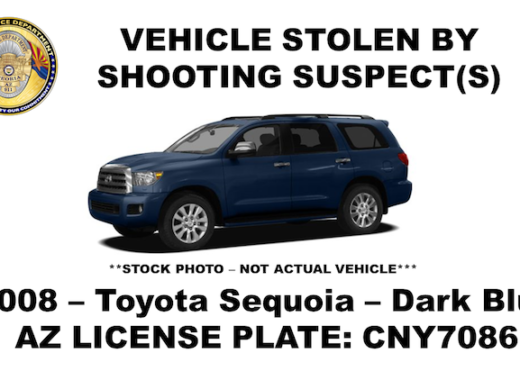The National Park Service, in cooperation with the Arizona Game and Fish Department (AZGFD), seeks skilled volunteers to assist with the removal of bison on the North Rim of Grand Canyon National Park in the fall of 2021. Interested parties should carefully read this announcement and the information in the links below.
Between 300 and 500 bison are on the Grand Canyon’s North Rim. The park wants to reduce the number to 200, and it has made progress with corralling and relocating the animals. Given the current distribution, abundance, density and the expected growth of the bison herd on the North Rim, the NPS is concerned about increased impacts on park resources such as water, vegetation, soils, archaeological sites and values such as visitor experience and wilderness character. Reducing the herd size will protect the park ecosystem, resources and values.
Grand Canyon Officials say the bison increasingly have been trampling archaeological resources, creating deep ruts and wallows in meadows, and spoiling ponds. They can be hunted on the adjacent national forest, which has pushed them to make their homes almost exclusively within the Grand Canyon.
Individuals who are interested in applying to be volunteers can submit an application on the following website (www.azbisonstewards.com) beginning at 12 a.m. MST (Arizona) on May 3 through 11:59 p.m. MST on May 4, 2021. Volunteers must:
- Be U.S. citizens 18 years of age or older with valid photo ID
- Have the ability to purchase and pass a background investigation and have no criminal or wildlife violations
- Self-certify a high level of physical fitness ability
- Have a firearm safety certification and pass a marksmanship proficiency test (3 of 5 shots in a 4-inch circle at 100 yards)
- Provide their own equipment, firearm, lodging, food and field dressing supplies. See firearm FAQs.
- Be available for the entirety of one of the assigned lethal removal operational periods. Individuals may not participate in more than one: Sept. 20-24, 2021; Sept. 27-Oct 1, 2021; Oct. 18-22, 2021; Oct. 25-29, 2021
- Meet all additional requirements listed on www.azbisonstewards.com and the NPS FAQ page.
Thousands of people from across the country are expected to apply. The state wildlife office will select and vet 25 applicants and forward those to the park service, which will choose 12 in a lottery. The volunteer pool will be selected using a random lottery system and selected individuals will be contacted by the NPS by May 17, 2021. At the end of the week, volunteers may be given up to one bison in exchange for removal by AZGFD. Employees of the National Park Service or other Department of the Interior agencies and the Arizona Game and Fish Department are not eligible to apply.
This effort to reduce bison to a more manageable herd size is supported via consultation with the public and traditionally associated Tribes as well in the 2017 Environmental Assessment conducted by NPS, the State of Arizona and the US Forest Service.
Native American tribes will have a separate opportunity to become volunteer shooters, but those agreements have not yet been finalized.
Unlike hunting, volunteers won’t have to pay for a bison tag that can top $5,400 for non-Arizona residents. Shooting a bison at the Grand Canyon also won’t count against the one bison lifetime limit for hunters.
Much of the effort will be done on foot in elevations of 8,000 feet (2,438 meters) or higher at the Grand Canyon’s North Rim. Volunteers cannot use motorized transportation or stock animals to retrieve the bison that can weigh up to 2,000 pounds (907 kilograms). Each volunteer can choose a support crew and will have to prove firearms proficiency. Volunteer shooters must bring their own equipment and use non-lead ammunition to avoid the risk of poisoning the endangered California condor that scavenges on gut piles.
For more information regarding bison impacts and monitoring, please visit: https://www.nps.gov/articles/bison-impacts-and-monitoring.htm.








